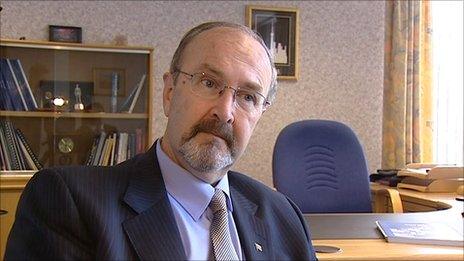Police Ombudsman: Attacks at centre of PSNI legal action
- Published
Northern Ireland's chief constable is being taken to court over claims he obstructed Police Ombudsman investigations into allegations against the police in 60 murders.
Police Ombudsman Michael Maguire is attempting to force Matt Baggott to hand over sensitive intelligence material.
The PSNI said it believed it had responded appropriately to each request on a case-by-case basis.
Here are some of the cases where the Police Ombudsman is seeking more information.
Peadar Heffron

The PSNI constable was driving to work at Woodbourne police station in January 2010 when a booby-trap bomb exploded underneath his car near Randalstown, County Antrim, about a mile from his home.
He was 33 years old at the time, and had been a police officer for 10 years. His right leg was amputated following the attack.
Dissident republican group Óglaigh na hÉireann carried out the bombing.
The Catholic policeman had been the captain of the police's Gaelic football team, and is an Irish language specialist for the PSNI.
Denis Donaldson

For 20 years, the senior Sinn Féin member led a secret life as an informer for MI5, the RUC and PSNI.
Then in December 2005, he was told by police that the media were about to expose his role as an agent, external, and went public with the revelations at a news conference in Dublin.
He later fled to a remote cottage the family owned in County Donegal, where he was shot dead a few months later, external.
Three years after he was killed, the Real IRA said they were responsible.
Mr Donaldson's family have alleged that police officers who knew about his secret role may have exposed him as an agent and contributed to his death.
An investigation by the previous Police Ombudsman, Al Hutchinson, found no police misconduct and declared the matter closed.
However, his successor Michael Maguire began a fresh investigation in January 2013. He said the decision was taken because of new information of which his office was previously not aware.
Loughinisland massacre
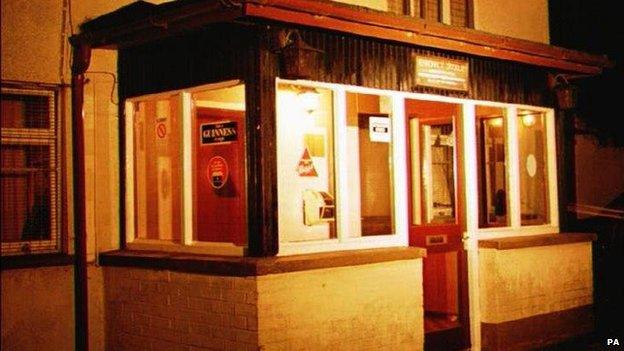
Six men were shot dead by the UVF at the Heights Bar in 1994
The Heights Bar in Loughinisland was packed with people watching the Republic of Ireland play Italy in the 1994 World Cup, when Ulster Volunteer Force gunmen burst in and opened fire indiscriminately.
Six Catholic men were killed, including 87-year-old Barney Greene, one of the oldest victims of the Troubles in Northern Ireland.
Also killed were Adrian Rogan, 34, Malcolm Jenkinson, 53, Daniel McCreanor, 59, Patrick O'Hare, 35, and Eamon Byrne, 39. Five others were seriously wounded.
No-one has been convicted of the murders.
It has been claimed that the Royal Ulster Constabulary (RUC), external did not conduct a proper investigation because they were protecting an informer, and that there was collusion between some police officers and the killers.
A report by the previous police ombudsman, Al Hutchinson, concluded that the RUC failed to properly investigate what happened at Loughinisland, but said there was insufficient evidence of collusion.
Those findings were quashed after a legal challenge by relatives of those who were killed.
Michael Maguire is now conducting a fresh investigation.
Colleen McMurray

Constable McMurray, from Sixmilecross in County Tyrone, was the sixth policewoman to be killed during the Troubles
In March 1992, the 34-year-old police constable was travelling in an unmarked car with a colleague in Newry, County Down, when the vehicle was hit at point blank range by an IRA mortar bomb.
Constable McMurray, from Sixmilecross in County Tyrone, was the sixth policewoman to be killed during the Troubles and the 37th person murdered that year.
Her colleague, Paul Slaine, lost both his legs in the blast. Eight years later, he accepted on behalf of the RUC, the George Cross, external, the highest civilian award for bravery.
It has been claimed that the RUC's Special Branch had advance warning about the attack, and that at least two IRA informers were involved.
'Good Samaritan' bomb
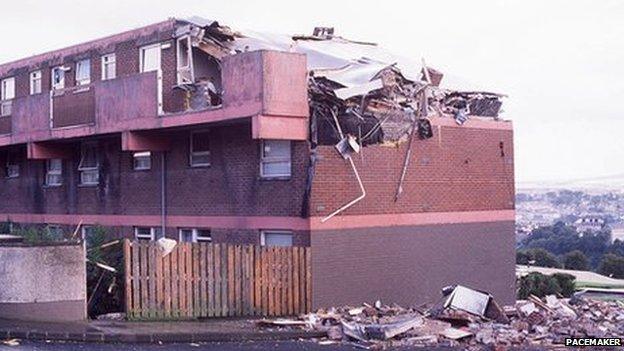
Eugene Dalton, 54, and Sheila Lewis, 68, were killed in the blast, while 57-year-old Gerard Curran died months after being pulled from the rubble
In August 1988, an IRA booby-trap bomb exploded at flats in the Creggan estate in Londonderry, killing three friends.
Eugene Dalton, 54, and Sheila Lewis, 68, were killed at the time, while 57-year-old Gerard Curran died months after being pulled from the rubble.
The attack became known as the "Good Samaritan bomb" because they had gone to look for a neighbour who had been kidnapped earlier by the IRA.
Almost 25 years later, Police Ombudsman Michael Maguire found that police officers had information about the bomb, but did nothing to warn residents of the possible danger.
In May 2014, a High Court judge dismissed a legal challenge by retired RUC officers to the report, as proceedings did not begin within three months of its publication.
Tommy Casey

Tommy Casey had gone to check on the home of a friend who was on holiday, but was shot as he arrived at the house
The Sinn Féin member was shot dead by the UVF near Cookstown, County Tyrone, in October 1990.
He had gone to check on the home of a friend who was on holiday, but was shot as he arrived at the house.
Reports at the time suggested the intended targets had been two men who were dating his friend's daughters.
Two weeks after Mr Casey was murdered, loyalist gunmen broke into the house, but when no-one arrived, they set fire to it.
Earlier this year, Mr Casey's family lodged a complaint with the Police Ombudsman, claiming that the RUC's investigation into his murder had key failings.
Patsy Kelly

The 33-year-old independent nationalist councillor went missing after locking up a bar in Trillick, County Tyrone, in July 1974.
His body was found three weeks later, 10 miles away in Lough Eyes in County Fermanagh.
He had been shot several times and his body had been weighted down.
The loyalist paramilitary Ulster Freedom Fighters admitted the murder.
The Historical Enquiries Team began a fresh investigation in 2007, but two years later his family said they did not trust the inquiry and withdrew their cooperation, external.
His family, who believe there was collusion with rogue UDR members, say Dr Maguire told them earlier this year that he would look at the case.
- Published3 June 2014
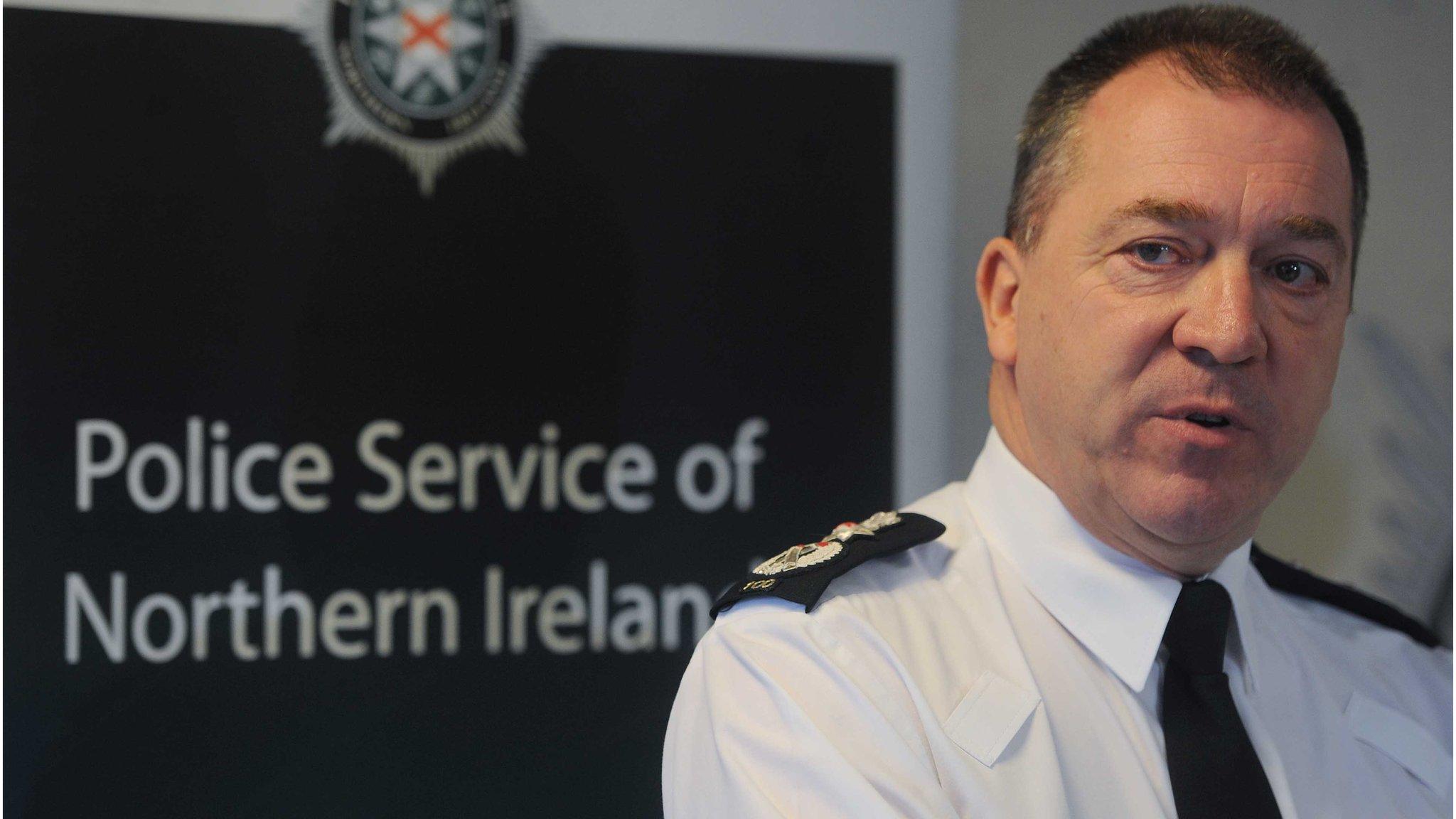
- Published5 December 2013

- Published23 January 2013

- Published23 January 2013

- Published17 July 2012

- Published8 September 2011
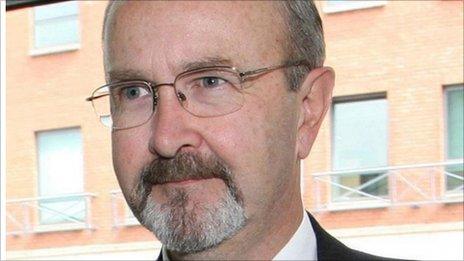
- Published5 September 2011
